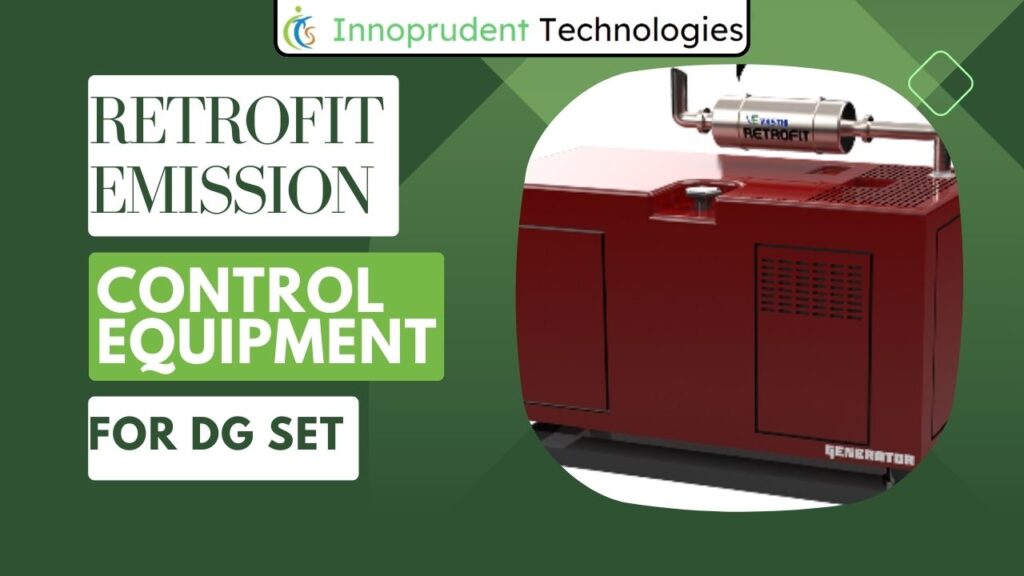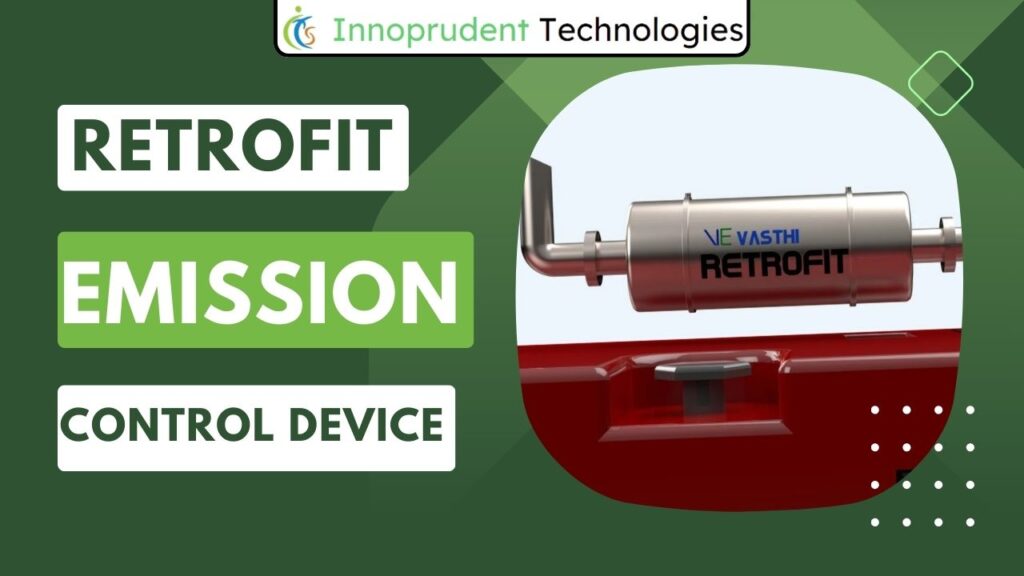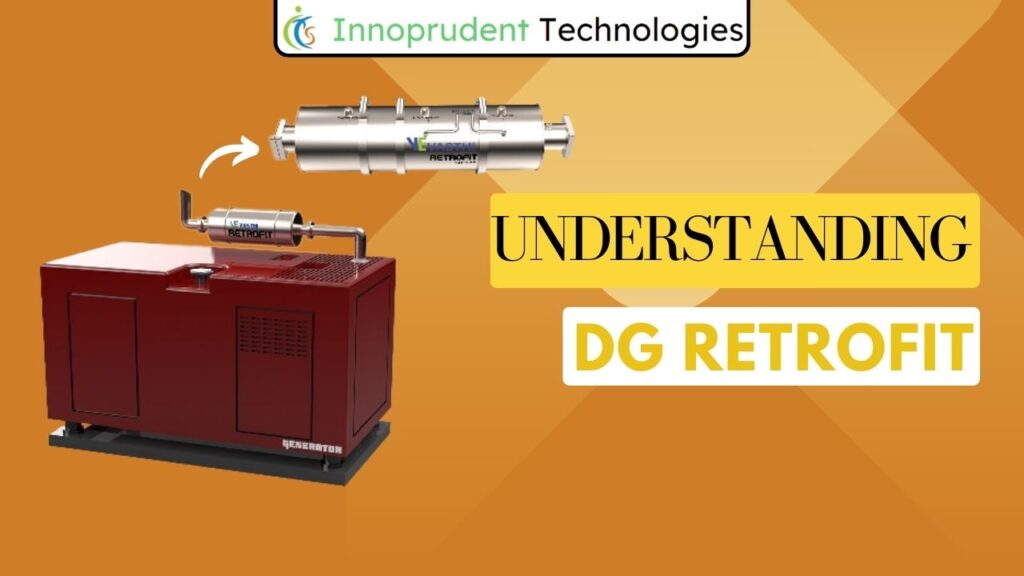Introduction
Diesel generator sets (DG) have long been recognized as a reliable source of energy, providing power during power outages and in remote locations when it is needed most. However, this reliable energy source has the drawback of emissions. Without proper emission control systems, DG equipment releases pollutants such as nitrogen oxides (NOx), particulate matter (PM), and carbon monoxide (CO) into the atmosphere, causing environmental degradation and air pollution. This is where retrofitted emission control equipment for DG sets comes into play, providing a cleaner, greener, and more sustainable solution for DG equipment.
In this comprehensive blog, we have a look into the world of modified emission control devices designed specifically to transform DG devices into environmentally friendly power sources. We address the urgent need for emissions control in DG units, investigate the various retrofit options available, consider their operating principles, and explore the many benefits they bring not only to the DG unit owner but also to the environment. Emphasize. we all have it and share it
Understanding the Need for Emission Control in DG Sets
DG devices play an important role in supplying electricity, especially in an emergency or in a remote location that cannot be accessed by normal power networks. They are known for their reliability and initiatives. However, as with other energy sources, there is a drawback that harmful substances may be released into the air.
Please consider this. When the DG plant operates without a pollution control system, a mixed pollutant is released into the atmosphere. These pollutants include nitrogen oxides (NOx), fine particles (known as particle-like substances or PM), and carbon monoxide (CO). These pollutants are not good for our health and environment.
Why It Matters for the Air:
The DG set is a powerful machine, but its performance comes at a price. Burning diesel fuel to generate electricity produces NOx, including nitrogen oxides (NO) and nitrogen dioxide (NO2). These NOx compounds in the air can combine with other substances to produce ozone and smog, two known air pollutants, at ground level. These pollutants can irritate the airways, worsen conditions such as asthma, and even cause respiratory illnesses.
Small PM particles emitted by DG equipment are also a concern. These small particles can penetrate deep into the lungs and cause breathing and heart problems. This is especially worrying for children and the elderly.
Health Risks:
Carbon monoxide (CO), is a gas that can’t be seen or smelled. But it’s dangerous. High levels of CO can cause carbon monoxide poisoning, which can cause symptoms such as headache, dizziness, confusion, and in severe cases, death. To prevent CO buildup, it is important to have good ventilation and emission control systems in place, especially in enclosed spaces where DG sets are used.
Why We Need Emission Control:
As people around the world become more aware of environmental issues and the effects of pollution, there is a growing demand for cleaner energy sources and stricter regulations to protect the environment. Governments and organizations are tightening emission standards to reduce the environmental damage caused by power generation.
It is clear that emissions from DG equipment need to be controlled, not only to comply with these new regulations but also to protect our health and the environment. The retrofitting of her DG equipment with emission control devices is a positive step towards a cleaner, more sustainable future that ensures reliable energy without negatively impacting the environment. The next chapter explores renovation options and explains how they can help achieve these goals.
Retrofit Options for DG Set Emission Control
- Diesel Particulate Filters (DPF): These filters efficiently capture and reduce particulate matter emissions from DG set exhaust, significantly improving air quality.
- Selective Catalytic Reduction (SCR) Systems: SCR systems are champions in NOx reduction. They accomplish this feat by converting NOx into harmless nitrogen and water through a precise chemical reaction.
- Oxidation Catalysts: Designed to reduce CO and hydrocarbon emissions, oxidation catalysts are a vital addition to emission control systems for DG sets.
How Retrofitted Emission Control Equipment Works for DG Sets
Now, let’s take a closer look at how the emission control equipment we install in DG sets actually works. Don’t worry; we’ll keep it simple and easy to understand.
Diesel Particulate Filters (DPF): These are like super filters for the exhaust from DG sets. They’re excellent at catching tiny particles, like PM, that would otherwise escape into the air. When the exhaust goes through the DPF, the harmful particles get trapped, leaving behind cleaner air to breathe. Over time, though, the DPF can get clogged with all the particles it collects. But it’s smart – it cleans itself in a process called regeneration. It’s like giving your DG set a good scrub, making sure it stays clean and doesn’t pollute the air.
Selective Catalytic Reduction (SCR) Systems: These systems are like the cleanup crew for NOx, one of the tricky pollutants DG sets produce. They use a special chemical called urea, which reacts with the NOx in the exhaust to turn it into harmless nitrogen and water. Think of it as a magic trick that transforms something harmful into something safe. SCR systems are very effective at reducing NOx emissions, which is a big win for air quality.
Oxidation Catalysts: These are like the detoxifiers of the emissions world. They work on CO and hydrocarbons, which can be harmful if they escape into the air. Oxidation catalysts help break down these pollutants into less harmful substances, making the exhaust cleaner and safer for everyone.
Understanding how these systems work is crucial because it shows us how they can make a real difference. They’re like the superheroes of emission control, quietly working to make the air cleaner and safer for us all.
Benefits of Retrofitting Emission Control Equipment for DG Sets
These are the benefits of RECE for DG Sets-
- Reduced emissions pave the way for a cleaner and healthier environment, aligning with stringent environmental regulations and advancing sustainability goals.
- Retrofitting ensures that DG sets comply with emissions standards and regulations, safeguarding against penalties and legal complications.
- Better air quality not only benefits communities but also enhances public health, particularly in urban areas where DG sets are prevalent.
- Emission control systems have an added perk – they enhance the longevity of DG set components by mitigating the corrosive effects of emissions.
Some More Posts
Conclusion
Finally, we considered that it is most important to retrofit the emission control device of the DG equipment. This environmentally conscious decision allows DG device owners to significantly reduce their environmental footprint while continuing to enjoy reliable power. We encourage all his DG equipment owners to take this greener power generation route, consider the myriad retrofit options available, and create a sustainable future for future generations. is highly recommended.
What is a DG set, and why is emission control necessary for these devices?
A DG set, or diesel generator set, is a power source that uses diesel fuel to generate electricity. Emission control is necessary to reduce the harmful pollutants, such as NOx, PM, and CO, released into the atmosphere when DG sets operate, contributing to cleaner air and better health.
How do Diesel Particulate Filters (DPF) work in retrofit emission control systems for DG sets?
DPFs are designed to capture and reduce particulate matter emissions from DG set exhaust. They act as super filters, trapping tiny particles and ensuring cleaner air by cleaning themselves through a process called regeneration.
What is the role of Selective Catalytic Reduction (SCR) systems in emission control for DG sets?
SCR systems are effective in reducing nitrogen oxides (NOx) emissions from DG sets. They use a chemical reaction involving urea to convert NOx into harmless nitrogen and water, contributing to improved air quality.
How do Oxidation Catalysts contribute to emission control for DG sets?
Oxidation catalysts work to reduce carbon monoxide (CO) and hydrocarbon emissions from DG sets by breaking down these pollutants into less harmful substances. They play a vital role in ensuring cleaner and safer exhaust emissions.
What are the key benefits of retrofitting emission control equipment for DG sets?
The benefits include reduced emissions for a cleaner environment, compliance with emissions standards and regulations, improved air quality, extended DG set lifespan, and enhanced public health, especially in urban areas with DG set usage.




Pingback: Maximizing HVAC Efficiency: Simple Tips to Reduce Energy Consumption - Innoprudent